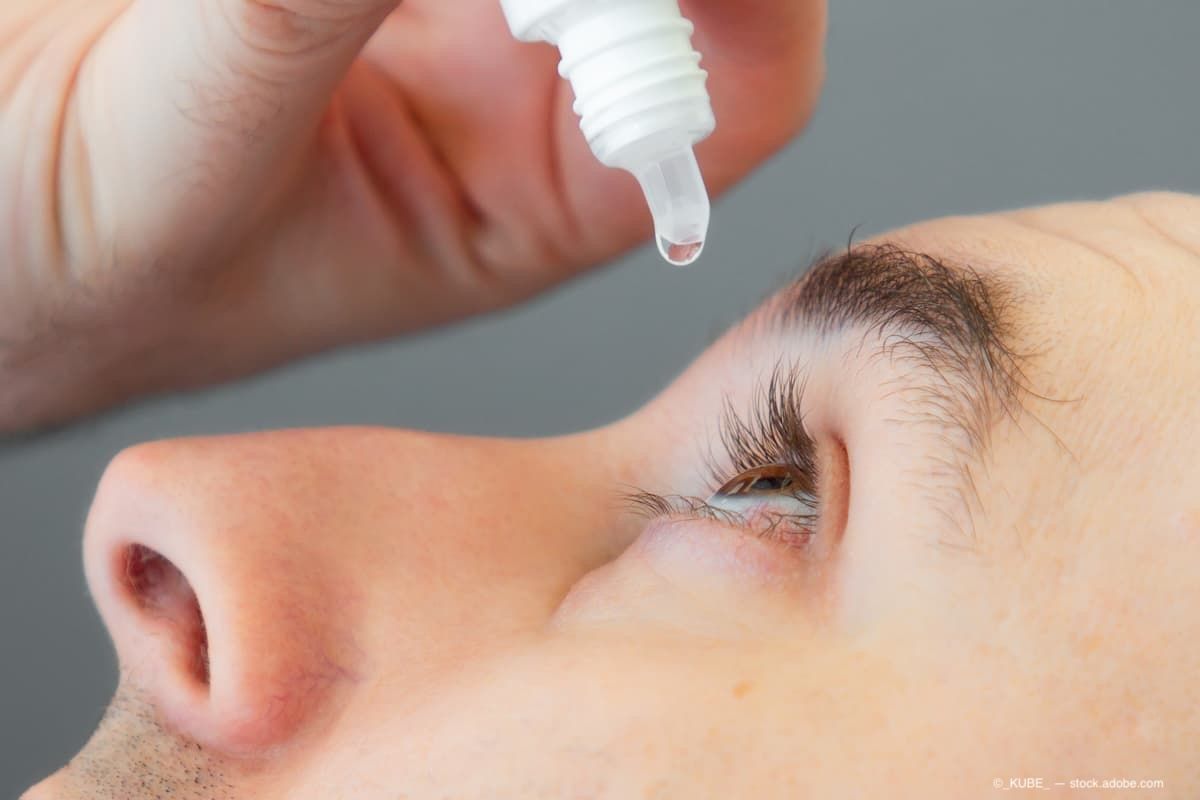Publication
Article
Treating dry eye and other ocular conditions may take a village
Author(s):
Educating patients about the importance of consistent care is key.
(image Credit: AdobeStock/Molly Ferguson Art)

Reviewed byJohn Sheppard, MD, MMSc, FACS
When patients present with dry eye disease and other ocular conditions, the treatment course may become more challenging. John Sheppard, MD, MMSc, FACS, of Virginia Eye Consultants, Norfolk, described 2 such cases and his treatment approach in 2 patients with dry eye disease, and shared some of the highlights.
Sheppard emphasized the need for importance of collaboration among ocular clinicians considering the low number of ophthalmologists in training annually and the tripling of the Medicare population in recent decades. He emphasized that optometrists and ophthalmologists should be experts in ocular surface disease.
Case 1
A female software engineer aged 48 years was president of the local bird watchers chapter. She was very fussy about her vision and presented with dry eye. Characteristically, individuals engaged in bird watching do not blink adequately.
She had worn 30-day contact lenses for 34 years, followed a strict pescatarian diet, and was in good physical shape. She had a family history of hypertension and migraines. She had a history of taking contraceptives, metoprolol hormone replacement therapy (HRT), and vitamins and ω-3 supplementation. She has used thermal pulsation, cyclosporine, lifitegrast (Xiidra; Novartis), eyelid scrubs, and masks.
Sheppard pointed out the factors that can cause/worsen dry eye to which clinicians should be alert: HRT use, contraceptive use, and ethnicity. Asian and Hispanic patients tend to have worse problems with contact lens use in ocular surface disease. He advised that clinicians ask how long patients have used each therapy and whether they have changed practitioners between each therapy.
Levels of therapy
A first-line therapy for a patient who has not attempted previous treatment for dry eye might be an oil-based tear and probably the popular lifitegrast or cyclosporine, especially in the presence of an autoimmune disease or underlying inflammation.
In patients who have not tried at least 1 artificial tear, Sheppard recommended trying that approach using cyclosporine (Cequa; Sun Ophthalmics) cyclosporine (Restasis; Allergan). However, he also strongly recommended switching contact lens use, which is the No. 1 reason for complaints in patients with dry eye. “This may motivate patients who are not highly symptomatic to adhere to a treatment because they do not want to give up their contact lenses,” he commented.
Multiple types of contact lenses are available, such as hydrophilic lenses. Silicone lenses cause discomfort. In patients with severe dry eye, scleral lenses may be the best option in that they are refractive and therapeutic. Daily disposable lenses are another option that serve as a bandage lens and protect the cornea.
Prolonged contact lens wear is the greatest cause of stem cell deficiency in the United States. “The more days and hours of use of a hypoxic contact lens, the more likely is the development of stem cell deficiency,” Sheppard said. In these cases, stopping contact lens wear is ideal, followed by a scleral lens or a Prose lens (BostonSight). For the current patient, collagen plugs might prove to be a good option.
Sheppard recommended first abandoning contact lens wear for the current patient and then evaluating the drying drugs she was taking to determine whether they were medically necessary, especially the HRT. Another option may be an ocular ointment, such as Refresh Lacri-Lube Eye Ointment (Allergan); drops may be a poor choice for older patients with poor vision, hand tremors, or arthritis, or patients diagnosed with the disease who are generally nonadherent.
Sheppard also has been using varenicline (Viatris), an oral cessation therapy for smokers, for almost 3 decades. He noted the drug has a 55% success rate and an excellent safety profile. The drug works by activating the trigeminal nerve, which stimulates lacrimal function.
Perfluorohexyloctane (Miebo; Bausch + Lomb) is a therapeutic option that can treat meibomian gland dysfunction. The phase 2/3 clinical trials showed that the signs and symptoms of the disease responded remarkably well. Sheppard added that he believes perfluorohexyloctane will change how clinicians prescribe.
The environment is a big factor in severe dry eye (ie, the computerized cell phone environment and air conditioners and heating units, which remove humidity).Sheppard also likes to use a lid scrub, such as hypochlorous acid (HypoChlor; OCuSOFT) for severe dry eye.
An important question to ask patients who present with dry eye symptoms, Sheppard advised, is about the presence of tearing, which patients do not associate with dry eye. “A very important question in our practice is how we handle ocular surface disease before a surgical referral. Education is the answer for surgeons,” he explained. “Glaucoma and cataract procedures can make dry eye worse.”
After administering the level 2 drugs after drops, the next level would be a tetracycline such as doxycycline to treat the inflammation. Azithromycin is preferred because of low cost and good safety profile. Application of amniotic membrane is another tertiary-level treatment but is associated with blurry vision.
Case 2
A man aged 63 years likes to be outside, is a former smoker, and had skin disease and sleep apnea, the latter of which is treated. He eats badly, does not drink, and has a body mass index of 27, which is close to clinical obesity.
He takes lovastatin and uses Walmart tears every 2 hours. His vision is good, but he has a cataract and clinically significant glare. His topography of the right eye is good with minimal higher order aberration and mild astigmatism; the left eye has a good deal of irregular astigmatism. He also has a lot of erythema in the lid margin and chronic inflammation.
The ocular surface in this patient requires preparation before cataract surgery can be performed. This patient was predisposed to basement membrane dysfunction and the topography is poor. The eyelids are severely affected and should be treated before the ocular surface.
Sheppard advised that to obtain the optimal optical quality, the epithelium be removed and mitomycin C administered followed by bandage lenses or amniotic membrane postoperatively. He prefers then to wait 3 months before performing cataract surgery to allow sufficient healing time.
This patient has a multifactorial condition that requires combining therapies. “What’s your underlying wisdom for combining therapies?” he said. “You treat the worst thing first. You treat the obvious things first and then you work your way up the ladder.”
Sheppard added that questions remain: Is it more important to manage the surfaces before glaucoma surgery or before photorefractive keratectomy? Which is more important, your acuity or your optic nerve?
“Remember the ocular surface, which is an integrated unit. The lids, tear film, and the nerves have to be in good condition,” Sheppard added. “The lacrimal function has to be properly stimulated. Everything has to work. Clinicians need to be ocular surface disease experts.”
The takeaways regarding these patients with dry eye are removing the contact lenses, assessing the eyelids, paying attention to the patient’s medical history and medications, taking charge of the patient, and controlling the situation to avoid their moving move from physician to physician. Finally, educate patients about the importance of consistent care.
John Sheppard, MD, MMSc, FACS
P: 757-622-2200
Sheppard is from Virginia Eye Consultants in Norfolk. He has no financial disclosures related to the content of this article.
Newsletter
Don’t miss out—get Ophthalmology Times updates on the latest clinical advancements and expert interviews, straight to your inbox.




